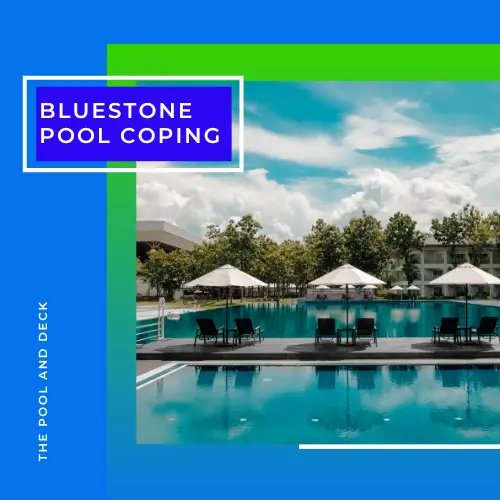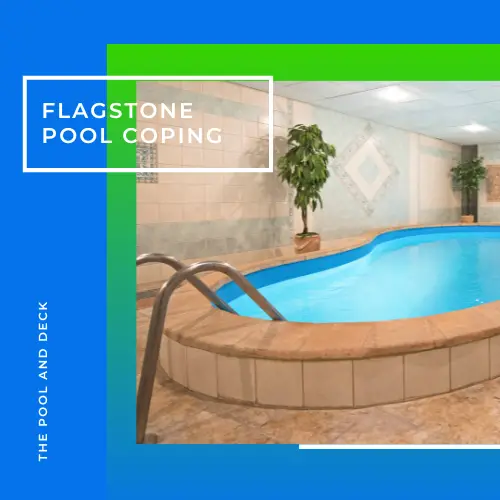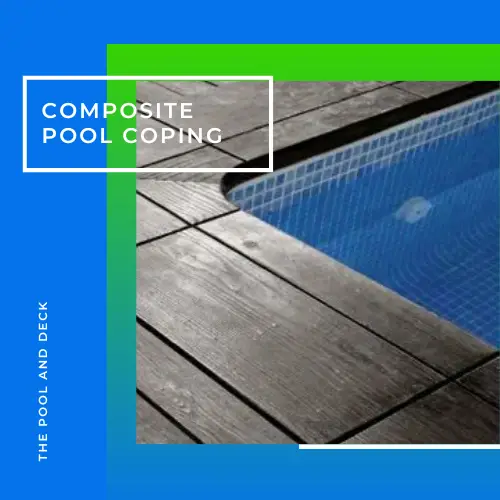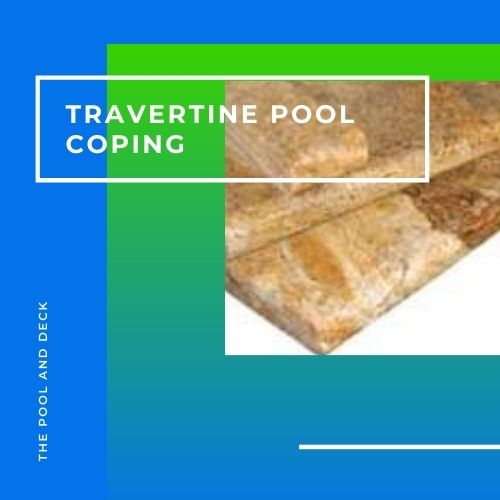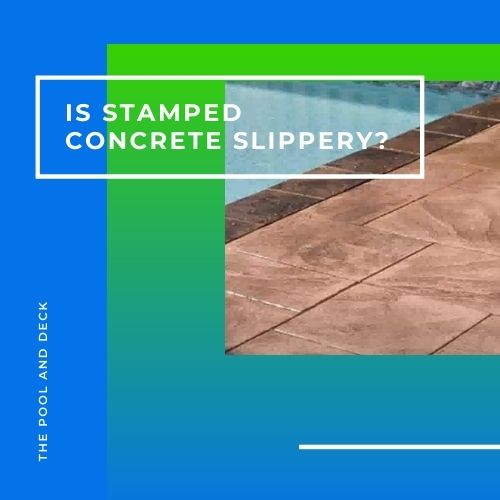Concrete Pool Deck Cracks: How Best to Prevent & Repair in 2025!
As an Amazon Associate, I earn from qualifying purchases.
Table of Contents
What Are Concrete Pool Deck Cracks?
Concrete pool decks cracks are inevitable. Over time, factors like shifting soil, temperature changes, and moisture exposure cause cracks in the concrete around the pool.
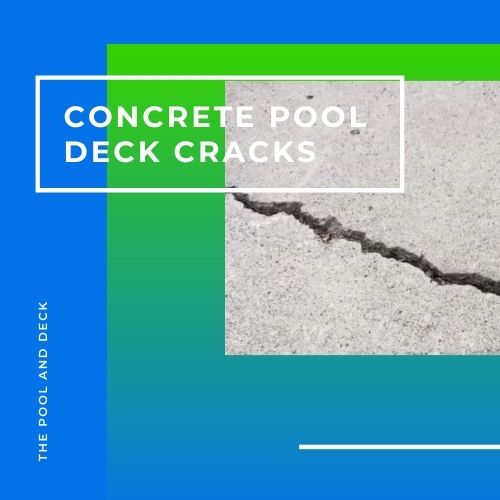
While some cracks are minor and cosmetic, others may require attention to prevent further damage. Understanding why cracks form is the first step in fixing cracks in a pool deck.
Concrete is one of the most durable building materials, used in everything from skyscrapers to bridges. However, even with proper installation, repairing concrete around a pool is sometimes necessary.
Pool decks expand and contract with temperature changes. Without the right joints or reinforcements, cracks in the concrete slab will appear.
The good news? Cracks don’t always mean structural failure. Knowing how to repair concrete pool deck cracks can save time and prevent more costly repairs down the road.
In this guide, we’ll cover what causes cracks, when to be concerned, and the best ways to fix them.
What Is Concrete?
Concrete basically has only three components; cement, water and aggregates.
“Concrete is a composite material composed of fine and coarse aggregate bonded together with a fluid cement (cement paste) that hardens (cures) over time.”
Source: Wikipedia
The concrete mix
“.. is about 10 to 15 percent cement, 60 to 75 percent aggregate and 15 to 20 percent water. Entrained air in many concrete mixes may also take up another 5 to 8 percent.”
Source: The Portland Cement Association
The concrete mix is a slurry, but once the concrete mix has been poured the curing process begins. This happens by a chemical process called hydration. The cement reacts with the water to form crystals.
The crystals grow into a matrix enveloping the sand and other aggregates in a tight mesh. This converts the concrete mix into a rock hard solid material.
What Causes Cracks in Concrete Around the Pool?
A concrete pool deck cracks, either due to stress caused by shrinkage during the curing process or stress caused by ground movement below the slab, later on.
Concrete Shrinkage
During the curing process the water evaporates and causes the concrete to shrink. Concrete has very high compressive strength but very poor tensile strength. The concrete pool deck is not able to withstand the stress created by the shrinkage and cracks.
The shrinkage cracks in concrete slabs is a perfectly normal occurrence. They are also known as hairline cracks and are less than 1/16 th an inch wide. Shrinkage cracks can become visible as soon as the curing process begins.
Another form of shrinkage cracking is called “crazing”. Crazing happens if the surface of the concrete slab dries out very fast, during curing, due to high air or concrete temperatures or low humidity (often both). The cracks are very fine and shallow but spread across the entire surface.
Concrete pool deck shrinkage cracks have no adverse effect on the structural integrity of the slab.
Coatings, such as epoxy, mirror the cracks in the concrete deck. Of course they do not look pretty!
Ground Movement
The concrete slab can also be subjected to tensile stress due to the movement of the ground below it. In spite of a well prepared and compacted base, the ground below the slab moves and settles over a period of time.
Ground settlement under a concrete slab is usually the result of:
- Change in soil moisture content
- Poor base preparation & compaction
- Soil erosion due to rain or plumbing leaks
Concrete pool deck cracks as a result of ground movement may or may not be serious depending on the cause and the size of the cracks. But you do want to call in your contractor or a qualified structural engineer to take a look.
Note: Major structural cracks in the pool deck could be bad news for your in ground pool too!
Is It Possible to Avoid Cracks in Your Concrete?
It is impossible to avoid cracks in your concrete. But you can take preventive steps to
- Minimize the extent & size of cracks
- Make them less visible
- Reduce the chances of their beng structural
The preventive steps are:
Base Preparation & Compaction
It is very important to prepare the base for the concrete slab correctly. Start off by marking out the area of the pool deck.
Remove the top soil by digging a hole in the ground. The depth of the hole should be equal to the sum total of the base and concrete slab thicknesses. For a slab-on-grade allow a few extra inches at the edges. The edges will then function as footings.
The exposed soil should be smoothed and any low areas filled up. Tamp the surface using a hand or mechanical tamper. You should be able to walk on the tamped soil without leaving footprints.
Check out Bully Tools Tamper Thick Steel Plate with Steel Handle on Amazon.
Next put layers of compactible gravel, crushed stone or recycled concrete for providing adequate strength to the base. The layers must be compacted at each stage for a strong and solid base. Build up around 4-6 inches of this base.
A well prepared & compacted base will prevent soil subsidence and reduce the possibility of large concrete pool deck cracks.
Slab Thickness & Reinforcement
Of course the strength of a concrete slab is proportional to the thickness. Do not even consider a slab thickness of less than 4”. It is possible to pour one but it will be so weak that it will be cracking and crumbling at the slightest load.
You can not place reinforcing rebars in a concrete slab that is 4” or less thick. In my opinion, a concrete pool deck should be at least 6” thick. A thickness of 8” would be a lot better.
Reinforcing a thick concrete slab with steel rebars gives it both compressive and flexural strength. A concrete pool deck which is 8” thick and is reinforced with steel rebars will be quite resistant to cracks.
The pool deck will not deform or crack in spite of some movement or subsidence in the grade below.
Concrete Mix Composition
The concrete mix composition, especially the water-cement ratio, plays a critical role in determining the concrete shrinkage, concrete strength and development of cracks in the concrete slab.
“There’s an inverse relationship between the eventual compressive strength of concrete and the amount of water used in the mix—the higher the water-cement ratio, the lower the strength.”
CONCRETE CONSTRUCTION
To get a compressive strength of 3500 psi and to minimize shrinkage cracks, the water-cement ratio in the concrete mix should be 0.5.
Contractors do not like a low water-cement ratio, as it makes it more difficult to work the concrete slurry. Fortunately, there are concrete mix additives that help reduce the water-cement ratio without reducing the workability.
Sika is a world leader in water-reducing admixtures. Water-reducing admixtures lets you reduce water content in a concrete mix by 5-10% without any effect on the workability.
The result is you can get a high strength, low shrinkage concrete that is also pliable and workable.
The Curing Process
The complete concrete curing process takes 28 days.
During this process, water is reacting with cement to form crystals and evaporating. The quantity and rate of water evaporation is directly related to concrete shrinkage and cracks developing in the concrete slab.
The concrete and ambient temperature are crucial to get the best results from concrete slabs. Concrete should be placed ideally in conditions between 50 degrees and 75 degrees Fahrenheit.
Moreover, this temperature range must be maintained during the entire concrete curing process.
The crystal growth & water evaporation process is curtailed at low temperatures and accelerated at high temperatures.
During the initial curing process, water bleeds and evaporates from the surface. The concrete surface will dry out. Moisture loss from the concrete surface must be reduced by fogging or ponding the surface with water.
Without fogging or ponding at this stage, crazing can occur.
Even after the initial curing, water-based curing methods need to be employed to control the rate of water evaporation from the concrete. This can include fogging, sprinkling, ponding or wet covering.
Expansion & Control Joints
Expansion and Control joints in a concrete slab are sometimes misunderstood to be the same thing. They are similar but they are not the same. However, both help “manage” the concrete pool deck cracks.
Expansion Joints
Expansion joints are placed before the concrete pour. The purpose of the expansion joint is to give space to the individual slabs to move, expand and contract, without putting stress on the adjoining slab, wall or whatever it abuts.
Expansion joints are especially useful along the length of a swimming pool deck. The joints, not only make it easier to pour concrete but also give individual slabs room to move.
Concrete is very rigid and brittle. Expansion joints are made out of a material that is flexible. For a concrete pool deck Sakrete concrete expansion joint would work quite well.
Control Joints
Control joints are made after the concrete pour, leveling & floating, but while the concrete is still wet and malleable. Concrete has a tendency to crack every 10-12 feet.
Strategically placed control joints encourage the concrete slab to crack at the control joint, rather than anywhere at random. A control joint in a concrete slab is the weak spot. Cracks due to ground movement are more likely to happen at the weak spot.
The depth of the control joint should be about ¼th the thickness of the concrete slab. In other words the control joint should be 1 ½ ” deep for a 6” thick concrete pool deck.
Concrete Sealing
Once the concrete slab has fully cured (28 days) it is time to seal it. There are two types of concrete sealers; penetrating & topical. Each has a role to play when it comes to dealing with concrete pool deck cracks.
Penetrating Sealer
Concrete is full of pores; a result of water & entrained air in the concrete mix finding their way to the surface and escaping.
Water seepage into the concrete pores results in the corrosion of the steel reinforcement bars and a reduction in the tensile strength of the concrete. During winters, the water will freeze and thaw cyclically and put pressure on the existing cracks to grow.
A penetrating sealer will seep into the tiny pores (capillaries), fill them up, solidify and block them, so that water can not enter.
I recommend Foundation Armor SX5000 Water Based Silane Siloxane Penetrating Concrete Sealer.
Topical Sealer
Topical sealer is helpful in filling up the surface cracks. As a result the crack will not become home to dust, algae, mold and insects such as ants. The topical sealer will, however, not hide the crack as it is clear.
I recommend Foundation Armor AR350 Solvent Based Acrylic Wet Look Concrete Sealer.
Thank you very much for reading the post. I do hope you found it informative and helpful.


